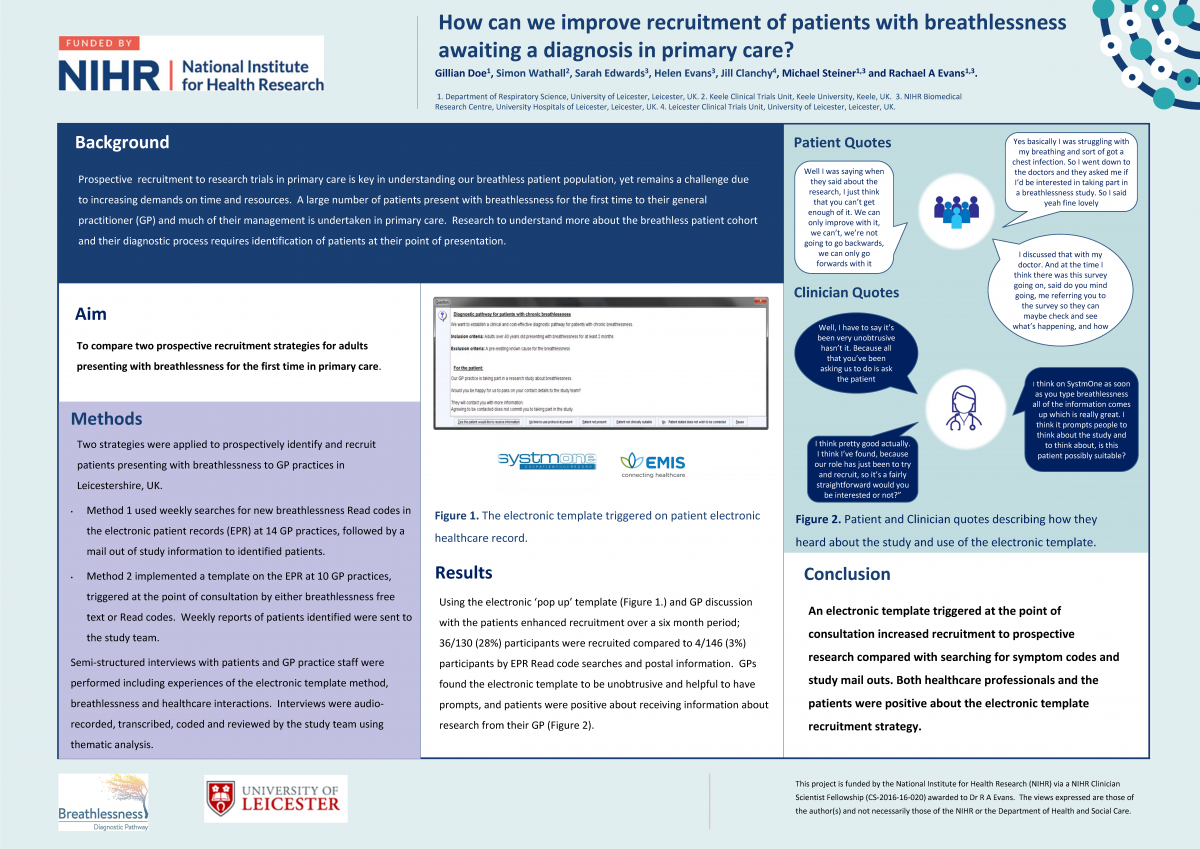A comparison of two research strategies to prospectively recruit patients presenting with breathlessness awaiting diagnosis in primary care. (ID 303)
University of Leicester
Abstract
Background: Prospectively identifying patients with breathlessness who are awaiting a diagnosis in primary care for research studies is a challenge.
Aim: To compare two prospective recruitment strategies for adults presenting with breathlessness for the first time in primary care.
Methods: Two different strategies were applied to prospectively identify and recruit patients presenting with breathlessness to GP practices in Leicestershire, UK. One method used weekly searches for new breathlessness Read codes in the electronic patient records (EPR) at 14 GP practices, followed by a mail out of study information to identified patients. The second method implemented a template on the EPR at 10 GP practices, triggered at the point of consultation by either breathlessness free text or Read codes. The template summarised the study, prompting GPs to ask patients’ consent to be contacted by the study team. Weekly reports with patients identified were sent to the study team.
Semi-structured interviews with patients and GP practice staff were performed including experiences of the electronic template method, breathlessness and healthcare interactions. Interviews were audio-recorded, transcribed, coded and reviewed by the study team using thematic analysis.
Results: Using the electronic ‘pop up’ template and GP discussion with the patients enhanced recruitment over a six month period; 36/130 (28%) participants were recruited compared to 4/146 (3%) participants by EPR Read code searches and postal information. GPs found the electronic template to be unobtrusive and helpful to have prompts, and patients were positive about receiving information about research from their GP (Figure 1).
Conclusion: An electronic template triggered at the point of consultation increased recruitment to prospective research compared with searching for symptom codes and study mail outs. Both healthcare professionals and the patients were positive about the electronic template recruitment strategy.
Funding: This work was funded by a NIHR Clinician Scientist Fellowship (CS-2016-16-020) awarded to Dr R A Evans.
Conflicts of interest: None
The conference has been instigated and organised by PCRS. We are grateful to sponsors and exhibitors who have contributed funding towards this event in return for exhibition space. Neither sponsors or exhibitors have had any input into the agenda or the selection of speakers with the exception of any sponsored satellite symposia which are clearly indicated. View the full list of sponsors.
The conference social programme - dinner, drinks and disco - is not covered by sponsorship or exhibition fees.
